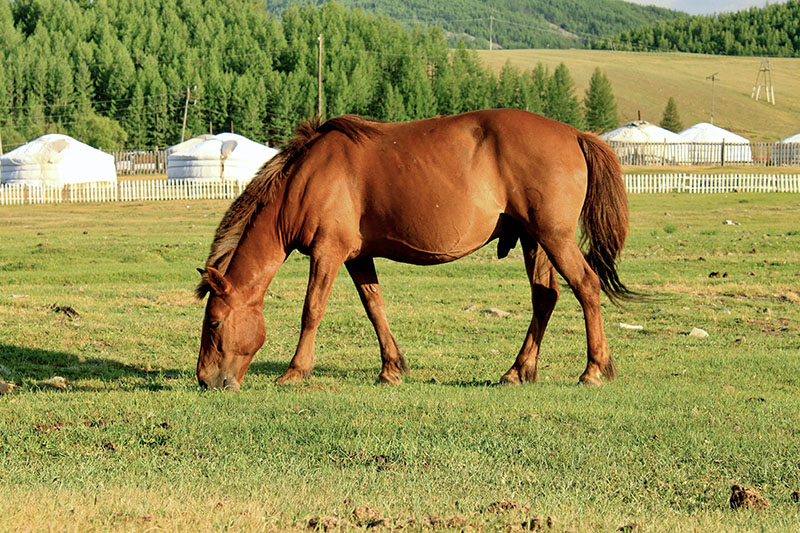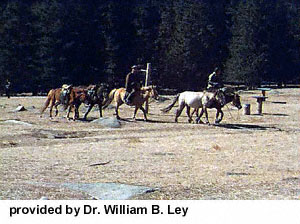Mongolian Horses
 The Mongolian horse is the native horse breed of Mongolia. The horses in Mongolia
live outside all year round, grazing and finding food on their own. Mongol horses
were essential to the Mongol Empire's conquests in the thirteenth century.
The Mongolian horse is the native horse breed of Mongolia. The horses in Mongolia
live outside all year round, grazing and finding food on their own. Mongol horses
were essential to the Mongol Empire's conquests in the thirteenth century.
The Mongolian horse is one of the most important and numerous breeds found among the indigenous horse breeds of Asia. The Mongolian horse is theorized to be the founding stock for many other horse breeds in Asia, including the Tuvinian, Akhaltekin, Yunan, Japanese and Cheju. They are distributed widely throughout the the continent, mainly in the high plains and highland areas. It is a dual-purpose horse, used primarily for riding and carting, but is also used for meat and milk production.
Characteristics
With a huge head and relatively short but powerful legs, Mongolian horses have a stocky body. They are 500–600 pounds in weight. They somewhat resemble the horse that Przewalski owned. The average wither height of males is 128 cm, females 127 cm, but body size varies with environmental conditions.
Mongolian horses are modest in stature, yet they are very strong. Mongol horses rarely experience foot issues and have robust, firm hooves. It is believed that horses from various parts of Mongolia possess distinct characteristics. It's stated that desert horses have bigger than typical feet. Mountain horses are especially powerful and short. The tallest and quickest breed of Mongol equines are called steppe horses. Strong horses are a characteristic of Darkhad horses. There is a large range of colorations in horses. Horses of different hues are preferred and bred by people in different parts of Mongolia. Although many Mongolians prefer dun, bay, or black horses and avoid white-colored animals, the Darkhad ethnic group loves white horses.
Work

Mongolian horses possess remarkable working ability. For carting, four horses, with a load of 4400 lbs, can walk 50-60 km a day.
Warhorse Work
The most famous aspect of mongol horses is their use as Genghis Khan's battle horses. For food, drink, transportation, armor, shoes, decoration, bowstring, rope, fire, sport, music, hunting, amusement, spiritual strength, and, in the event of his death, a horse to ride in the afterlife, the Mongol soldier depended on his horses. Because of their durability, endurance, self-sufficiency, and independence in foraging, Mongol horses were ideal combat horses.
Racing, Riding, Tack Work
Horse racing is one of the most popular events in Mongolia, where races are long and involve many breeds of horses. This breed is known to have excellent endurance and have competed heavily in previous years.
Milk Production
During the grass-growing season, mares are milked 4-5 times a day, producing 0.11 lbs of milk each time. Yearly production is 662 lbs.
Hair
Mongolian horse hair can be used for a number of products including violin strings, rope, and a variety of ornaments.
References
Cheng. P. (1984) Livestock breeds of China. Animal Production and Health Paper 46 (E, F, S). Publ. by FAO, Rome, 217 pp.
“Mongolian Horse.” Wikipedia, Wikimedia Foundation, 4 Feb. 2024, en.wikipedia.org/wiki/Mongolian_horse.
